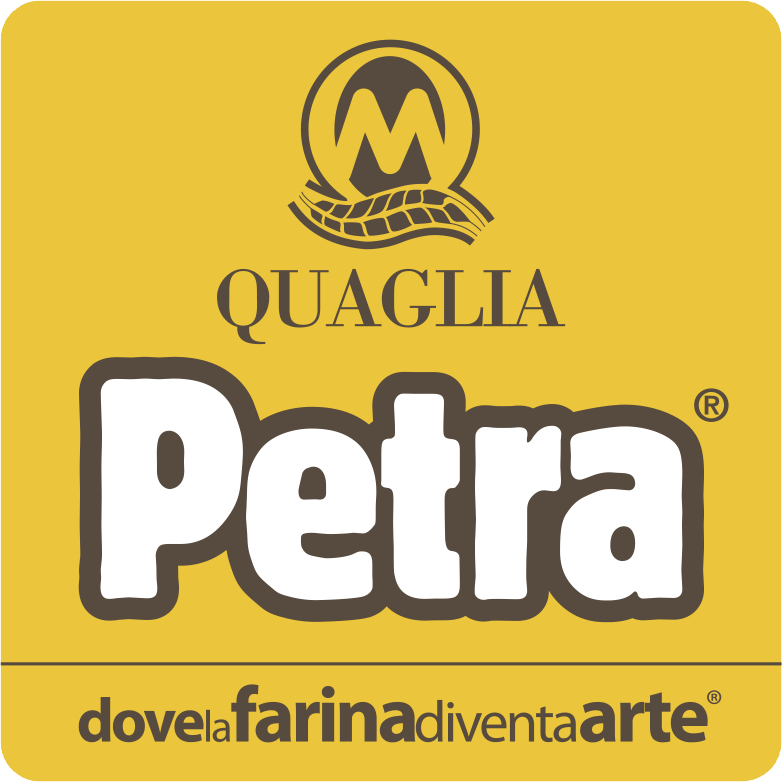Assenza sets the example: «Semifinished products are in conflict with the work of an artisan». And he lets France know that...
After announcing it on this website, click here to read the note, on September 18th Molino Quaglia organised a day to present the new phase in a project that dates back to five years ago. We’re talking about Pasticceria Dinamica® as opposed to a tradition the owners of the mill, Chiara Quaglia and Piero Gabrieli, find limited. She said:
«This tradition, though beautiful and livened up by excellent professionals, is too homogenised with French culture, so much so it leaves little space for people to express themselves. One can easily see our chefs have found their way, but not in the sweet world and indeed there’s a boundary in the restaurant between savoury and sweet».
There are many references, from consultants who force their vision on patron-chefs without helping them to enhance their own, to research, something Gabrieli holds very dear, focused on contemporaneity «which doesn’t mean modern, but interpreting the moment and context in which one expresses himself».
After all those who today appear as artisans, in fact use the same ingredients, the same industrial semi-finished products. Pasticceria Dinamica® «goes in the direction of natural taste, using less sugar and butter so as to be lighter and easier to track because it’s a real craftwork by the pastry-chef».
Please note we refer to pastry-chefs in restaurants. So much so that Corrado Assenza, the emblem and engine of this movement, recalls how «pastry-making is cooking, it is born with fire and develops, in the menu, right from the choice of starter. Today this is not always the case because next to meat, fish, vegetables, cheese… we have the industry of semi-finished products: it flattens everything and eliminates differences between territories».
It’s a direct attack to tradition. The Sicilian chef continues: «People often speak of tradition, but innovation is the real tradition because without researching good flavours, we’d still be in a cavern. Nobody ever certified tradition as tasting good. Tradition just tell us if a recipe existed at some specific time. If it arrived to our days, it is thanks to human culture».
And after the morning debate, in the afternoon we moved from theory to practice with a few dozen young pastry-chefs, because tasting is essential. And I thank Cristina Viggè for the notes on the “sweet itinerary”, in the words of Corrado Assenza.
Assenza focuses on pastry making capable of changing not only the seasons, but a day too. In order to meet the needs of a balanced breakfast or snack, of an alternative aperitif and an end-of-the-meal that is a wise consequence of the menu. As in the case of the tart with Italia grapes, in which almond flour, sponge cake and double fior di latte cream with chocolate create a debate between different textures.
Or as in the case of the zabaglione with chocolate and cream of whole wheat flour. A pudding made with the help of Petra 5 and Petra 9. The stone milled whole wheat flour is also used for the rustic lemon biscuits, made by mixing the dough with a fork.
The biscuits, with 40% butter and 60% extra virgin olive oil, are aromatic and Mediterranean, given also the use of lemon zest from femminello siracusano lemons of the verdello variety. A round and fragrant cookie, perfect for breakfast and afternoon tea.
How about the aperitif? The biscuit becomes puffy and savoury. «But I use little salt», Assenza points out. He also adds a pinch of chilly pepper to the dough which grows taller after the baking, and light and crispy.
A perfect match for ricotta sauce, enriched with a brunoise of chopped bergamot. Final touch: cherry tomato left for a couple of days in a vacuum pack in osmosis with acacia honey, onions from Giarre and basil.
«A fantastic cherry tomato» in the words of chef Luca Marchini of restaurant L’Erba del Re in Modena.
Then it’s time for the sweet-non-sweet, which brings things back to their primordial state.
«I start from wheat, the humblest ingredient», says Corrado. Who, recalling the Sicilian cuccia – a tradition from the 13th of December, dedicated to Saint Lucy – presents cuturro, a wheat that is profoundly wheat. Soaked in water, cooked in a steam oven and then “broken” in the cutter.
This results in evanescent flakes that are seasoned with honey and matched with an emulsion of almonds from Noto of the Roman variety. And to finish? Fruit in syrup: white melon from Paceco (cartucciaru, a Slow Food Praesidium), left in osmosis with vanilla, cinnamon and lemon zest; baked peach and rhubarb.
«Cuturro made me discover how much sweetness is naturally hidden in wheat. Interpreted in a dessert that shows sapidity», says the pastry-chef.
And almonds return. They take part in a sponge cake halfway between Sicily and Africa. For a dynamic duet of candied lemon and hibiscus gelatine: a cake paired with a ruby coloured solid tea, with a pleasant acidity and a refreshing character. It is softened by the velvety cream with double fior di latte. Much more than whipped cream.
It can even absorb curry, cardamom, vanilla and saffron, and then match a cocoa biscuit with specks of cocoa beans and prickly pear coulis. “This is the evolution of tradition. It goes beyond the stereotypes of classic pastry making and creates a dialogue with different spices and banks of the Mediterranean Sea”, Assenza docet.
Five years have gone by, since the first steps and, as mentioned by the managers at Molino Quaglia, this is a new pilot number. It’s a long and difficult road. Comparisons have been made with the revolution that took place with pizza, hoping this will happen in the dessert world too.
There are some common features, but the very different obstacles are bigger in this case. Just to give an example, pastry-chefs are almost never the owners of the restaurant where they work. So rather than thinking with their heads, they must obey and do as they’re told.
Paolo Marchi
source: http://www.identitagolose.com/sito/en/97/17680/dolcezze/for-real-italian-pastry-making.html?p=0
Leggi il testo integrale nel link FONTE (qui sopra)
BREAD RELIGION
Iscriviti e ricevi le novità nella tua email.














